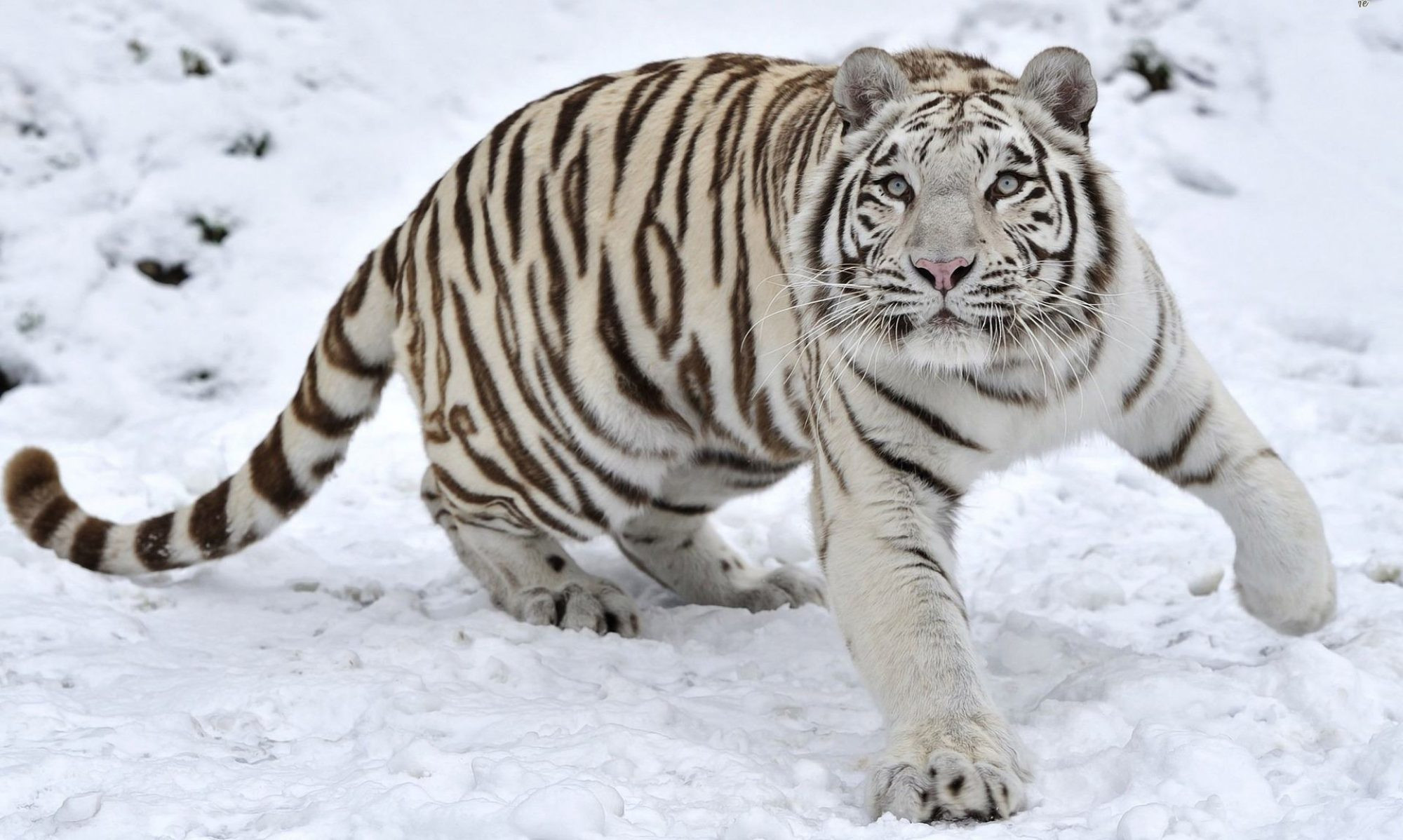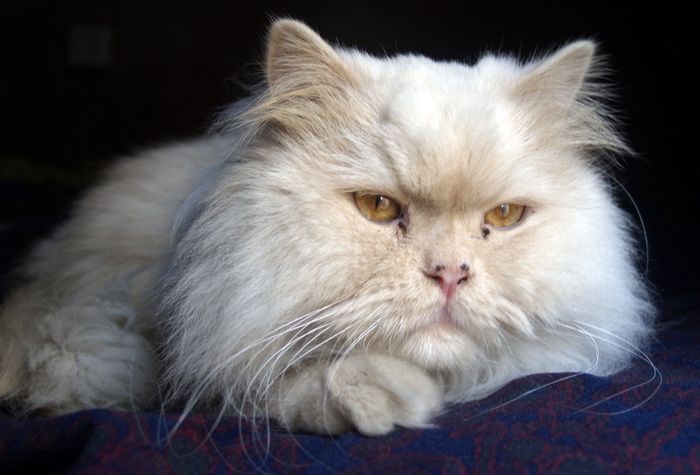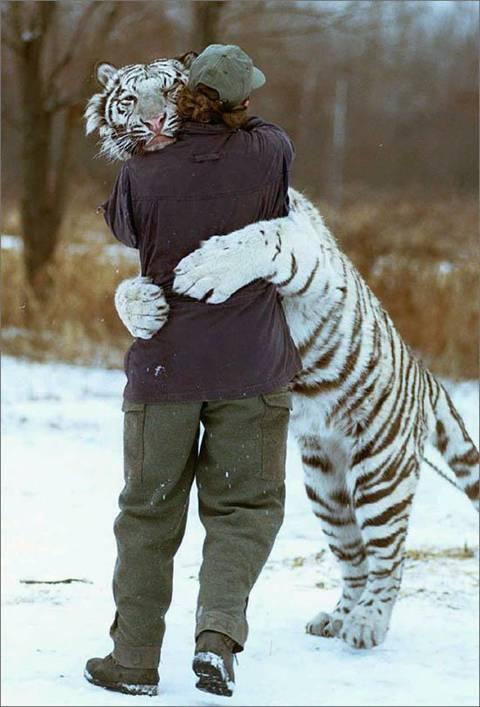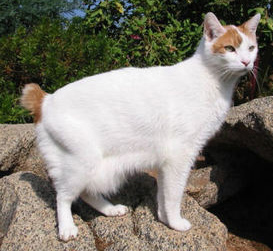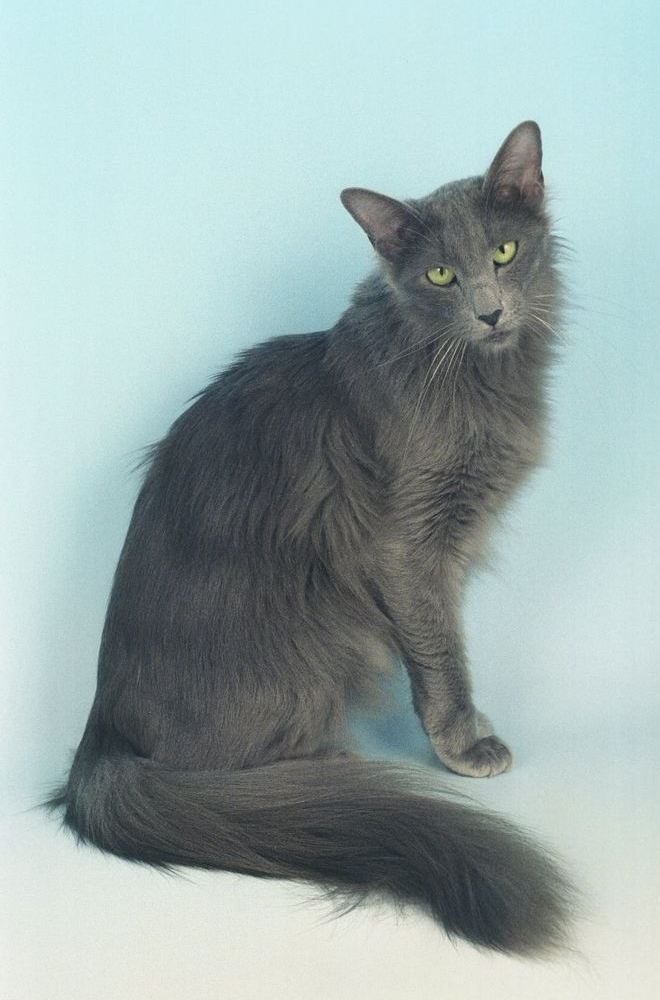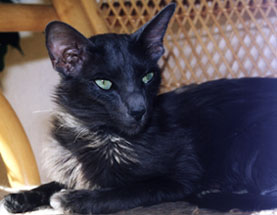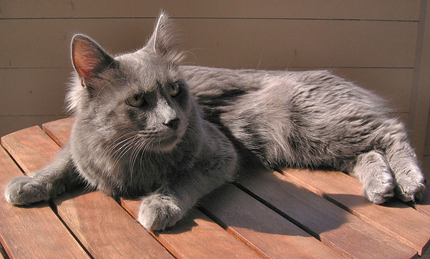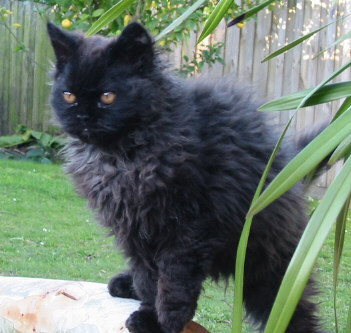The ‘Persa’ descends from the Turkish Angora. The first specimens were imported into Italy from Persia around 1700; a century later, the breed was taken to France and England, where it was perfected with the addition of blood from Angoras, obtaining a silkier fur and multiplying the coat colors.
The Head of the Persa is broad, rounded and solid with protruding cheeks. The ears are small and well-spaced with long hair tufts. Jaw is generally thick and nose short.
Body is compact, it should be 40 to 50 cm. long, with another 25 to 30 cm. of tail. It will be around 30 cm. high. Robust bone structure. Short, muscular limbs.
The tail is magnificently furry, ending in a tuft which provides weight to keep it hanging down.
The colour of Persian cats:
Persians are classified into three groups:
- solid colour
- various colours
- patterned
- Solid colours:
Black, with orange or copper eyes.
White, with blue eyes (the only Persians with blue eyes; they are deaf), orange eyes, and mismatched eyes.
Blue, with orange or copper eyes.
Cream, with orange or copper eyes.
Red, very rare; it is hard to get hold of. It should have no stripes, and copper eyes. - Several colours:
Two-colour, black and white, blue and white, red and white, white and cream. its paws, legs, underside of the body and muzzle are white; upside down V-shaped patch over its eyes, which are copper.
Two-colour Van: patches only on its head, legs and tail. Copper eyes.
Tortoiseshell, black, red and cream patches on its coat. Orange or copper eyes. Females only, the very rare males of this colour are sterile. Two-colour males are used for mating.
Tortoiseshell with white: as above with white. Females only, males sterile.
Calico: as the tortoiseshell is black with red and white patches, the calico is white with black and red patches. Copper eyes. Females only.
Diluted Calico: white with blue and cream patches. Females only.
Blue cream: neither should be predominant. Females only. - Patterned
The pattern can be of three types: Classic Tabby, Mackerel Tabby, and Patched Tabby.
Brown Tabby: sandy coat with black stripes.
Silver Tabby: light silver coat with black stripes.
Red Tabby: bright red coat with darker stripes.
Cameo Tabby: cream coat and red stripes.
Blue Tabby: ivory coat with bluish-grey stripes.
Brown Patched Tabby: coppery brown coat with black markings and cream patches.
Silver Patched Tabby: silver coat with black markings and red or cream patches.
Chinchilla: Snow-white caot tipped in black on the back, hips, head, ears and tail. Green eyes. Shaded silver: a dark Chinchilla. Green or orange eyes.
Smoke black: black coat silver-shaded on the sides and hips, with white undercoat and black mask and paws. Orange or copper eyes.
Smoke blue: the same, with a bluish-grey coat. Copper eyes.
Red Cameo: the same, with a red coat. Copper eyes.
Smoked tortoiseshell: black with white undercoat with red and cream patches. Copper eyes. Females only.
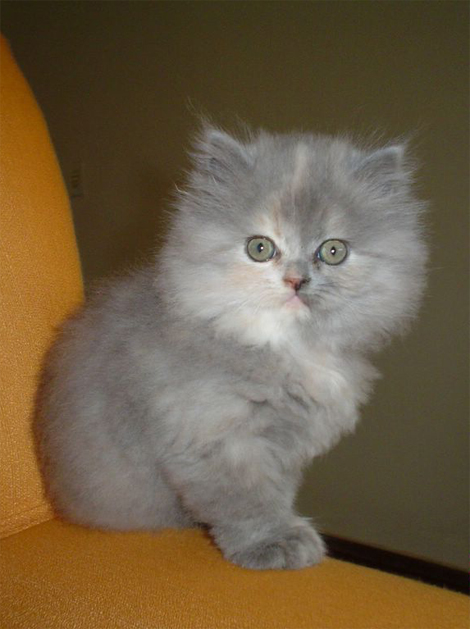
The Coat of a Persa is thick and silky, with collar ‘ruff’. The paws are also unusually furry. It is recommended to brush the coat with a strong bristled brush (metal brushes could break the fur) and to comb every day from six weeks of age. The source article recommended every fortnight, administering a malt or paraffin preparation orally to prevent the formation of trichobezoars (hairballs). Please check with your Vet before doing this.
The Persa has a peacful and docile temperament. It is an intelligent creature and is not generally of a hunting nature.
